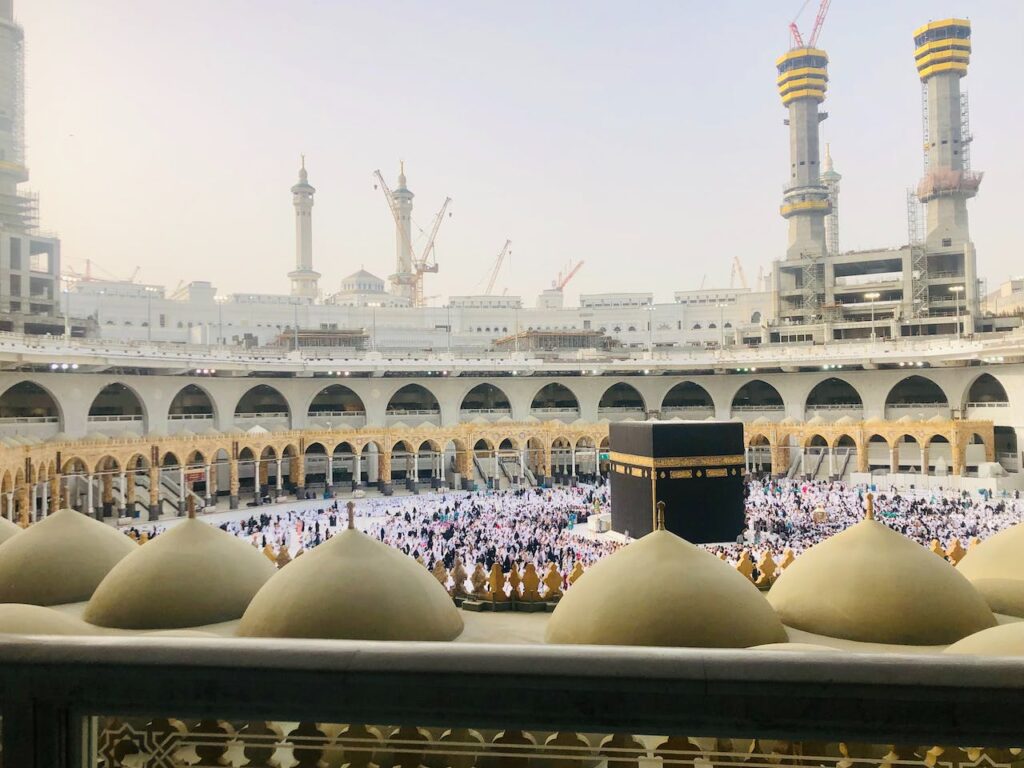The pilgrimage of Hajj is a sacred journey undertaken by millions of Muslims from around the world. It is a time of spiritual reflection, devotion, and unity.
What is The Significance of The Pilgrimage of Hajj?
Firstly, Hajj is one of the Five Pillars of Islam and is considered a fundamental religious duty for Muslims who are physically and financially capable of undertaking the journey. It is a time of spiritual purification, self-reflection, and seeking forgiveness from Allah.
Secondly, The significance of Hajj can be understood from both a historical and spiritual perspective. Historically, Hajj commemorates the trials and tribulations of the Prophet Ibrahim and his family. It is a reenactment of their journey and serves as a reminder of their unwavering faith and obedience to Allah’s command.
Spiritually, Hajj is a time for Muslims to renew their commitment to Allah and seek His forgiveness. It is a time of unity, where Muslims from different countries, cultures, and backgrounds come together in one place, dressed in simple white garments, symbolizing equality and humility.
The rituals of Hajj are deeply rooted in Islamic tradition and hold immense spiritual significance. From the Tawaf around the Kaaba to the standing at Arafat and the stoning of the Jamarat, each ritual has its own symbolism and purpose.
What Does it Take to Complete the Pilgrimage of Hajj?
Completing the pilgrimage of Hajj is a rigorous and demanding journey that requires physical endurance, financial resources, and deep spiritual commitment. It involves several rituals and acts of worship that every pilgrim must perform in order to fulfill the requirements of Hajj.
The Hajj consists of a series of rituals that must be performed in a specific order and at designated locations. These rituals include:
Firstly, Ihram:
Before entering the state of Ihram, pilgrims must enter a state of purity by performing ablution (wudu) and wearing clean white garments. The state of Ihram entails certain restrictions, such as refraining from cutting hair, trimming nails, using scented products, and engaging in any form of physical intimacy.
Secondly, Tawaf:
Pilgrims perform Tawaf, which involves circumambulating the Kaaba seven times in a counterclockwise direction. This ritual symbolizes the unity of Muslims and their devotion to Allah.
Moreover, Other Rituals
- Sa’i:
After completing Tawaf, pilgrims proceed to perform Sa’i, which involves walking seven times between the hills of Safa and Marwa. This ritual commemorates the search for water by Hajar and symbolizes perseverance and faith.
- Day of Arafat:
Pilgrims gather at the plain of Arafat and engage in supplication, reflection, and prayer. This day is considered the most important day of Hajj and serves as a time for seeking forgiveness and spiritual renewal.
- Muzdalifah:
After sunset, pilgrims proceed to Muzdalifah, where they spend the night in prayer and contemplation. They collect pebbles for the next ritual.
- Stoning of the Jamarat:
Pilgrims stone three pillars that represent Satan as a symbolic rejection of evil. This ritual emphasizes the importance of resisting temptation and staying steadfast in faith.
- Eid al-Adha:
Pilgrims celebrate Eid al-Adha, the Festival of Sacrifice, by offering animal sacrifices and distributing meat to the needy. This festival commemorates the willingness of Ibrahim to sacrifice his son as an act of obedience to Allah.
- Tawaf al-Ifadah:
Pilgrims return to the Kaaba to perform another Tawaf, known as Tawaf al-Ifadah. This signifies the completion of the Hajj pilgrimage.
- Tawaf al-Wida:
Before leaving Mecca, pilgrims perform a final Tawaf known as Tawaf al-Wida, or the Farewell Tawaf, as a gesture of bidding farewell to the Kaaba.
These rituals require physical stamina, mental focus, and adherence to the prescribed rituals. Pilgrims must navigate crowded areas, endure long hours of walking and standing,
and maintain a state of devotion and concentration throughout the journey.
In conclusion,
The pilgrimage of Hajj is a deeply meaningful and transformative experience for Muslims. It is a time of spiritual rejuvenation, communal worship, and deepening of faith. The significance of Hajj lies not only in the physical actions performed but also in the spiritual connection and personal transformation that it brings.
We recommend you learn more about Islamic Relief USA, an organization that provides humanitarian assistance and supports the Muslim community in the United States and around the world.






